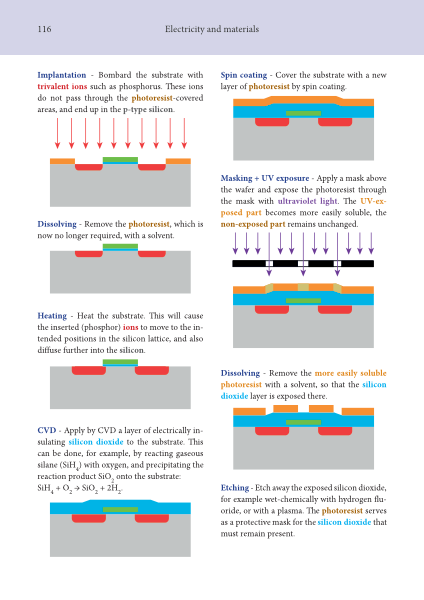Just like in the ‘good old’ desktop computers, the heart of today’s multimedia devices such as notebooks, tablets and smartphones is made up of microprocessors. Such a microprocessor, also known as computer chip, processes data based on instructions. A microprocessor consists of a huge number of tiny switches called transistors, each of which has essentially a simple task: to convert an input into an output using an instruction. Transistors consist mainly of semiconducting materials that that switch to 1 or 0 by either or not passing a current when a high voltage (1) or no high voltage (0) is applied over them.
The GIF animation on webpage ‘Computerchips: hoe werken ze, en hoe maak je ze?‘ in Dutch language shows how a (MOSFET) transistor works and outlines the physical and chemical process steps involved in making such a transistor – and therefore a computer chip.
Click on the image below to view a part of the fabrication process of an n-type MOSFET transistor in English language. More details of this fabrication process are given in chapter ‘Manufacturing of a MOSFET transistor’ in the book ‘Meet materials – Materials science & technology for people without a materials background’ (2021), to be ordered at Betase BV via this website.
